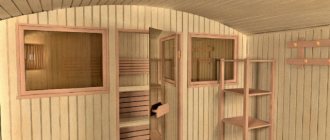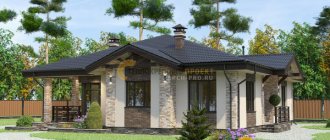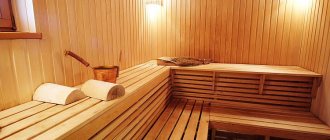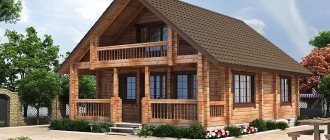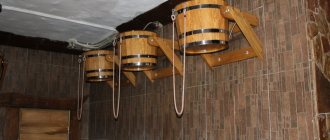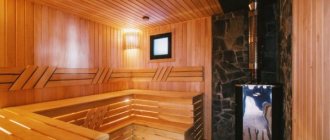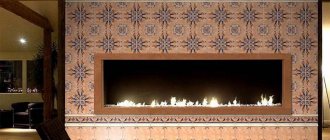African tree myths about abasha
An abasha sauna in the 20th century does not seem outlandish. There are many myths surrounding the material. Abacha is really picky about his tools. This means that there are subtleties of processing and this is true. It is said that abash can only be bought in elite stores. Now the material has become common, and the cost is also different. For abashi for baths, the price depends on the type. There is also a problem with counterfeits. The next myth is related to the disgusting smell.
Users are looking for a tree for a bath that does not heat up. In fact, the material has permissible temperature limits. The smell does appear, but it cannot be called disgusting.
Abashi for bath
Abashi for a bathhouse is associated with legends: no one knew about the amazing properties of wood, from which, due to its abundance, they made containers, simply boxes. And when one such box was accidentally forgotten in the sauna, someone noticed that the boards remained cool despite the intense dry heat. Harvesting abasha is done quickly: if you do not remove the bark and dry the logs, then in the heat the soft yellow inner wood reacts to pathogenic microflora - it turns blue and black, and these spots do not disappear after drying. It is also interesting that the smell of fresh abasha is disgusting, but when dried it completely disappears.
The low thermal conductivity of abasha and the rare beauty of the boards so inspired sauna lovers around the world that by the end of the last century, prices for abasha skyrocketed compared to the original low cost, and supplies dwindled. In Europe, even massive benches and decks were made from abasha, and not just elegant upper shelves of saunas; abash was also used for cladding and decoration of public and residential buildings. As a result, the beautiful African flora is under threat; for example, in Ghana today this plant species is the most vulnerable and the minimum diameter of logs for logging has been increased by the authorities to almost a meter. Engineers and wood specialists in Germany (this country has practically no forests of its own) tried to replace abash with deciduous wood, and achieved success with poplar wood - which has a rare beautiful pattern and low thermal conductivity. But poplars, the health care workers of cities, absorb smog, salts and the dirt of civilization very well, and therefore supporters of environmental cleanliness categorically rejected poplar shelves and flooring in saunas.
What can be found on sale
If you visit a store and choose a thermal abash, it turns out that you can do different things with it:
— lining;
- shelves abash.
There are differences in properties and price, so it makes sense to analyze each option separately.
Lining
Abash wood for a bathhouse, the price can be confusing. But the lining in the store is cheaper than the shelves. Abash wood for baths is divided into classes. Each species has individual characteristics. If you buy a thermocouple for your home, it is important to check the degree of processing. Different grades entail responsibilities for further processing and preservation of the material.
For abash, the price may be inflated due to individual sizes. Standard widths are 80, 85, 90, 95. Abash boards are also made to order. It can be with or without a thorn.
shelves
When the price of the abash for a bath is known, it’s worth moving on to the properties. Shelves are always sold processed. This material is ideal for cladding. African abash has standard sizes (width 80, 90 mm). If we consider the custom option, it can be 40-70 mm. It’s easier to buy a long-length abash for a bath. The maximum to date is 4 meters.
The second option for installing the lining
Today, there are several known ways to install lining in a bathhouse. You can use another technology that involves fastening the last elements in such a way that the fastening site remains open.
Holes for the heads of self-tapping screws should be drilled in the product. It is necessary to deepen it by 1/2 of its thickness. Once the screw is in, the hole is closed with a wooden dowel and sanded down. It is important to take into account during the operation of the steam room that the attachment points may dry out and become more noticeable.
Beware fake
The abashi board may not live up to expectations, since there is Asian imitation on the market. It is difficult to determine by external indicators, but there is a difference in smell. If you are considering an abash board for a bath, the price should start from 500 rubles. per linear meter. If the cost is less and more significant, it is definitely not triplochiton. Abash wood for a bath should be hard resin. This means that at high temperatures they retain their original properties. You can check with the seller for information regarding the fastening. If he says that a given sauna heater adheres remarkably well to nails, it’s a fake.
True connoisseurs of quality wood should be interested in silk wood. Only it is famous for its excellent characteristics, and over time it will not appear yellow.
Useful video
The author of this video has an amazing ability to talk about platitudes for a long time, but he is the only one who decided to make a video on different types of wood:
By the way, he says that abash brought from China smells bad. In reality, it all smells bad when freshly cut . After drying, the smell disappears. If your abash gives off an unpleasant odor, then it is most likely under-dried.
***
We are wondering if you want to decorate your steam room with abash? Write a comment and, if possible, state the main reason for your choice.
Making bathhouse shelves from abasha
When we managed to buy the abash shelves, all that remains is to consider the installation steps:
— marking;
- comparison of boards;
— cutting;
- installation.
Initially, markings are carried out to understand what material to use. It is better to keep abashi for baths in a ventilated area. When cleaning it, a smell is released, there is no point in inhaling everything. The next stage of installation is comparing the boards.
They must match in size and texture. Next comes cutting, and even a metal file is suitable for this. If you use a small tool, the high density of the material increases the risk of breaking it. When the cutting is done, all that remains is to install it with glue.
Where is it best to use African oak in a bath?
It is clear that each type of wood has its own advantages and disadvantages, and abasha also has them. In addition to the high price, one has to take into account the too low hardness of the wood. It cannot be filled with nails or self-tapping screws; the bathhouse floor made of abasha is quickly pressed through by heavy furniture or a stove. Shelves, hooks, and hangers cannot be hung on the walls of the bathhouse, lined with African and especially Asian abacha.
In addition, when finishing a bathhouse, you must be careful when handling expensive cladding; any blow with a tool, hammer, or careless movement with a saw leaves deep cuts and dents.
According to reviews from owners of steam rooms for baths, the use of Asian or West African abacha is justified only in three cases:
- If a dry and very hot atmosphere is created in the steam room of the bath, using the shelves, especially the top row, becomes extremely difficult due to the hot surface. An abash is ideal for a sauna, less so for a Russian steam room, and there is absolutely no point in laying an abash on a shelf for a Turkish bath.
- Children often visit and play in the steam room and in the waiting room of the bathhouse. The soft wood of African oak does not cause splinters and cuts, even if you walk or run on it barefoot;
- In case the floors in the steam room regularly rot and fail. This happens if the ventilation of the bathhouse and steam room is not done correctly, the corner areas of the room do not dry out and do not get rid of moisture.
Often, abasha is used to make insets into the floor near the heater, and lay wooden grates on which you can freely step with bare feet. An interesting option is the use of abasha for lining the floor of the washing compartment of the bathhouse. Tile is considered slippery and unsafe, rubber mats are not aesthetically pleasing or hygienic, but an abasha grate will last in the shower for as long as you like and looks nice.
It is believed that in the steam room of a Russian bath, expensive wood is too quickly saturated with water, condensation, and the smell of birch brooms and herbs used in bath procedures. Abacha wood is indeed more active than any other wood in absorbing odors and substances. Therefore, with soap, modern detergents, and even more so exotic honey, chocolate, and mud skin care products, entry into the steam room of the bathhouse is strictly prohibited.
Abasha lining can be used in the steam room of any bathhouse, the only condition is that after completing the session, the lining is washed with clean water and a linen washcloth to remove dirt and traces of sweat.
Processing Features
Abash is a unique material that requires careful handling during processing. High density immediately makes itself felt. Regular wood saws may not be effective. The second point is that African wood for a bathhouse is difficult to drill. Builders experimented with different drills, but the result was always the same. If you buy a shelf abash for your home, you must be prepared to be patient. Coarse grit sanding works well for finishing. Abacha wood is used with protection, but experts use antiseptics. Thus, the likelihood of fungus appearing is reduced to zero.
Where is wood used?
Many people are interested in the abash tree, where it grows and where it is used. There are such options
- furniture;
- musical instruments;
- figurines.
African abash is suitable for making furniture. These can be classic chairs or luxury sofas. If you look at the Abash tree photo, it has an interesting color. Musical instruments come out with great texture. On the market you can find not only guitars, but also professional violins.
Abash board for a bathhouse is a classic. Various decorative elements look good in any home. There is an opportunity to view figurines, elements on the wall or stream.
FAQ
Let's look at some of the most common questions regarding abasha for a bath.
How to distinguish an abash from a fake?
This can only be done by a specialist who has already worked with this tree. Therefore, purchases should be made only from well-known companies that have been operating in the market for a long time.
How long will an abash last in a steam room?
With proper care, the tree will last at least 40-50 years.
How does this tree tolerate domestic fungi and mold?
This is the tree's weak spot. With the wrong combination of tree species and improper care, the fungus can destroy the abash. It should be combined with fungus-resistant species or treated well with various impregnations to increase resistance.
Is it possible to find a cheap abash?
The market is full of fakes. Everyone has long heard about the unique properties of wood, which is actively used by scammers. Do not be fooled by the temptingly low price, as it is most likely a fake. There cannot be a cheap abasha for a bath in Europe.
Is there any harm from the tree?
Over 200 years of operation, no harm to the human body has been observed. In rare cases, an individual allergic reaction of the body to one of the components in wood is possible. Typically these are essential oils.
general characteristics
Now it has become easier to buy abash in Moscow, the characteristics of the material are known:
— compressive density over 200 N;
— shrinkage up to 12%;
— length up to 4 m;
— tensile strength up to 450 K;
— width from 60 mm.
Abash lining price differs from compression density. The second point is shrinkage, which depends on the variety. Next, tensile strength is important for the buyer. There are differences depending on the place of origin of the tree. Width and length are standard for all regions.
View this publication on Instagram
Publication from Construction of baths and saunas (@firecompro)
Properties of abasha wood
Abashi wood exhibits good density when the temperature rises. Resin content allows you to maintain considerable temperatures. Abash lining is durable. When working with the material, you will notice that the edges of the workpiece do not break off. If you buy abash, it is easy to process it with different tools. Since radial shrinkage is not significant, special attention is paid to the adhesive.
Properties of abasha wood:
— physical properties;
- humidity;
— thermal conductivity.
Not only physical properties, but also humidity should be considered. During construction, thermal conductivity is taken into account.
Physical properties
Abash wood demonstrates considerable thermal conductivity. This figure is more than 220 N per square meter. Abasha's heat capacity, on the contrary, is not significant. African oak is considered suitable for baths and saunas. Changes in humidity are not a problem. If you try to scratch it, it turns out that the marks are barely noticeable. The situation does not change when the temperature changes.
Humidity
Abazh refers to a variety of trees that has the following features:
- specific smell;
- without rotting;
- does not turn black;
- natural color.
The wood has a specific smell, but it is pleasant and somewhat reminiscent of spruce. According to statistics, the likelihood of fungus appearing is minimal. In a sauna or bathhouse, wood is used without signs of rotting.
It also does not turn black over time. And the same cannot be said about spruce or pine. Natural color gives an interesting texture.
Thermal conductivity
Abash has low thermal conductivity, below 20N. When people sit on shelves in a hot room, they do not feel the heat. Porosity allows wood to breathe. The service life is high, but there is a difference between grades.
Mechanical properties
Abazh has a dense structure. If you scratch it without strong pressure, barely noticeable stripes appear. Abash for baths is also suitable due to its low shrinkage. Other features:
— plasticity;
- strength;
- deformability.
Plasticity is assigned a rating of 5. This means that the wood does not lose its shape.
1 plasticity
Abasha has no problems with plasticity. Due to the high rating, the material is considered suitable for shelves. The thermobash can change shape only at temperatures above 150 degrees.
2 strength
Abash for a bathhouse has a bending strength of 100 N per mm2. It is possible to install long shelves. Abash for baths of different grades is suitable for installation with glue. Compressive strength is 45 N, and this figure is higher than that of oak.
Abasha also has rigidity in the horizontal position. The tensile strength is 80 N, and this is higher than that of pine or alder.
3 deformability
Low deformability is the main advantage of abasha. It is installed without shrinkage, so it is possible to accurately select the dimensions. Abash shelves have a radial swelling of less than 20N. The indicator is lower than that of pine and beech. Abash shelves also have insignificant longitudinal shrinkage - at the level of 10%.
Features of wood
Abash is excellent for baths, because it has low thermal conductivity, thanks to which the boards do not burn human skin even under the influence of high temperatures in a sauna or bathhouse. However, this breed also has many other useful properties, among them the following should be highlighted:
- resistance to mechanical stress;
- resistance to shrinkage;
- compatibility with wood of other types;
- color constancy even after long-term use.
When heated, the material will not release resin. It does not deform for a long time. The wood will remain dry even if the room humidity reaches 12%. The material slowly absorbs moisture from the ends, but if we compare it with aspen boards, the latter get wet quite actively.
Abash (this indicator is of great importance for a bath) has a high density, but is easy to process, so it is easy to manipulate. Screws go into wood well. You can hammer nails without fear of the material becoming cracked. It can be tinted. This type of wood can be used not only for cladding the internal surfaces of a sauna or bathhouse, but also for finishing a house. The material has low thermal conductivity, so the rooms will be cool in summer and warm in winter.
Abash for baths has many positive characteristics that generate appropriate reviews. For example, the maximum load on the material can reach 280 kg per square centimeter. At bends this value is 528 kg per square centimeter. Consumers also like the high density, which reaches 390 kg per cubic meter.
Technical and operational capabilities of abasha wood
Thermoabash differs in both technical and operational capabilities. The material requires attention, since it is not possible to use it in its original form. Builders know that thermobash retains its properties at a certain temperature.
When installing elements, you need to go through preparation stages. Otherwise, the thermobag loses its strength.
Basic moments:
- drying;
- grade.
Drying is of great importance for wood. Manufacturers indicate the method and duration on the packaging. Grade is important for the buyer because there is a difference in price and quality.
1 drying
For thermobash, drying is considered important. It is held outdoors. Manufacturers advise laying out the prepared boards and not touching them for a day. African oak can also be stored on racks. If this is not possible, ordinary wooden supports will do. that processing abacha did not cause difficulties, endurance is important. The material is not ready yet until the next day. Color may change slightly during this period. Important! Abashi wood shrinks slightly within 24 hours. Therefore, measurements are taken again before work.
2nd grade
African abash comes in different varieties:
- maple;
- pine
Abash maple lining lasts longer during drying. It has a light shade and the parameters are too high in density. Abash oak lining is also suitable for a sauna. However, it is darker in coloring. If you look at the characteristics, the density is underestimated, but not critically.
If you buy abash mallow, you can appreciate the play of light and shadow. The material looks different from different angles.
View this post on Instagram
Publication from Building Hammam▫️Saunas▫️Pools (@hamamnsk)
Is the smell of abasha suitable for a bath?
One of the reasons why African oak wood has not yet replaced linden is the unusual smell of fresh wood, not very pleasant and quite persistent. Traditional methods of struggle - warming up and frying the steam room before putting the bathhouse into operation - help little.
The unpleasant smell disappears after 4-5 weeks of using the steam room, and until this point you have to use blocks of freshly sawn cedar laid next to the heater. The smell of cedar removes and masks abacha fumes. Sometimes, fresh wood is treated with linseed oil, which helps protect the wood from stains and reduces the intensity of the odor.
If a radical solution is required, then heat-treated material can be used. The thresholds and corner slats of the bathhouse shelves are made from hardened Asian abacha, handles and parts of the cladding located in close proximity to the heater and ventilation system are cut out. And although African oak wood is not prone to rotting and warping, heat treatment can increase the durability and service life of the cladding up to 20 years.
Features of finishing work using abasha lining
If we consider abashi wood, conventional fasteners are not suitable for it. Experts recommend glue that is suitable specifically for wood. The abashi board is cleaned beforehand. It is important to carefully process the edges with a fine grain tape. Abash wood for baths is also suitable for making decorative elements. Glue can be applied in large quantities. Many people practice gluing in several layers. You will be able to surprise your friends with an interesting smell. Only new things smell like that. Even if there are small inserts in the sauna, they will create a good aroma.
Abash for baths review features installation technology and reviews
Abash wood is mounted on the base. The frame can be made of pine or beech. Many people consider oak. Errors:
- use of metal;
- use of plastic.
Such options are not suitable for technology. In this case, universal glue is used. Many rubber-based products can affect the properties of the board. African bath wood has an excellent combination with beech and pine. The base can be flat or multi-layered. The main rule is not to use metal fasteners. Abashi for baths is also combined with cedar. This performance will appeal to people who want to invest as much as possible to get a good result.
Abasha varieties for finishing baths
Today, under the term “abash”, a special type of finishing wood with very interesting properties, specific texture and color is offered on the materials market. Currently, workshops and salons offer three options for valuable wood for cladding a steam bath:
- Board made of abacha or otherwise African oak, growing in the tropical massifs of West Africa, most often Nigeria and Cameroon.
- Lining made from Central Asian abashi, a relative of African wood, but having a looser structure and therefore sold at a lower price;
- Thermal board made of African and Asian wood, heat-treated in a chamber. As a result of calcination, the material acquires a red-brown color, becomes more durable, wear resistance increases, and resistance to pathogenic microflora improves.
Real abash has an inexpressive texture, the pattern of the fibers is practically not visible on the surface, so the material can be cut and sawed in any direction, there will be no “striations” in the finish of larch, spruce or pine. The color of African abasha wood can vary from almost white to cream. Asian wood is the lightest, African wood has a richer color.
Lining installation technology
We are considering a medium-sized sauna, and here the installation process begins with simple steps:
— marking;
- fitting;
— cleaning;
- sizing;
- fixation.
Simple installation assumes that the glue will be applied in one layer. The abasha option will not work if the installation is carried out on an uncleaned surface. For example, a cut was made and debris remained.
At first the material does not heat up and no problems are found. The more changes in temperature, the faster the joint weakens. Thus, the sizing is done again.
Since the material is most often considered for a bathhouse shelf, it is worth studying the instructions in more detail:
- measurements of the base;
- cutout of the board;
— preparation of the base;
- gluing and fixing.
It all starts with measurements. You need to create a shelf for the board so that it fits there perfectly. Support can be at two or three points. For example, if the length of the board is more than 1 meter, it is worth placing a support in the center.
First of all, the master makes the frame. As mentioned earlier, the sides can be made of other wood. It is important to make internal supports not from abasha. They can be fixed with screws. Next, all that remains is to prepare the shelf.
Marking the length and width may not be enough. To make the shelf look its best, it is important to choose the perfect height. Some people deliberately make it so that the wood protrudes from above. However, compatibility with other materials is taken into account here.
At worst, from the outside it will look like a marriage. For example, the main material is light, and then the dark abash protrudes from above. Such features are striking. There is even a board that fits well on the shelf, it’s worth fixing it. Professional glue is suitable for this:
- epoxy;
- heat-resistant;
- carpenter.
The first option is the most economical. Epoxy glue is chosen to simply grip the board. When the temperature rises, it does not lose its properties. It is better to apply it with one ball.
Next in popularity is the heat-resistant option. The glue is suitable for fixing lining of any size. Unlike the epoxy type, it makes sense to apply the product several times. The store features domestic manufacturers. The price for a liter package starts from 450 rubles. Foreign glue costs about 500 rubles.
If you choose wood glue, you need to be prepared for trouble. Fixing the base to such material leads to the appearance of an unpleasant odor. Each time it is heated, fumes are released. When a person wants to redo it, he will have to sand the old layer.
Other options for craftsmen:
- casein;
- post-shaped;
- polyurethane.
You should start with casein glue. It is common for finishing work and is suitable for baths and saunas. When heated, no harmful substances are released, but the cost is higher than the next type. Paste glue can be sold in small tubes.
The advantage is that it does not require a large quantity to install the board. Builders distribute one tube evenly and lay the board. Some people advise working with dots, but this is a mistake.
View this post on Instagram
Publication from Building Hammam▫️Saunas▫️Pools (@hamamnsk)
Using nails during installation
People in Moscow often work with wood and know well that nails are not suitable for installation. The density of the material pushes out iron and the matter does not depend only on high temperature. The porosity of the wood also plays a role here.
It is not recommended to use screws yet. Because of them, the risk of cracks appearing on the surface increases. Without metal fasteners, the joints will also be smooth. The main thing is to think through the design and buy high quality shelves. Expert advice will save users from the need for rework.
Specifications
The tree has several important characteristics:
- specific gravity – 40-45 g/cm²;
- compression resistance – 250-300 kg/m²;
- resin content – about 0%;
- density – 650-700 kg/m³ in raw form and 300-350 kg/m³ in dried form;
- extremely low thermal conductivity.
Expert opinion
Lovkachev Boris Petrovich
Bath master who knows everything about steaming
Separately, it is worth noting the durability of wood in conditions of high humidity. The tree practically does not absorb moisture and does not shrink over time, maintaining its original structure. At the same time, abash easily lends itself to any type of processing, which makes it possible to make any decorative elements from it.
Pros and cons of abash lining for a bath
If we consider the lining, it has the following advantages:
- maintains high temperatures;
— the ability to combine with other wood;
- good strength;
- wood color.
High temperatures come first, so the material is suitable for a bath. Unlike pine or beech, wood can be combined with different substrates. Some people like spruce, others choose something from conifers.
High strength indicates the possibility of using long shelves. The color of the wood can be selected individually. If the main material is beech, you can use light shades.
Flaws:
— price;
- complexity of installation.
The growing importance of price in the market stops people. Indeed, you can consider other materials for a bathhouse. There are differences in properties, but the likelihood of quick completion of the work increases. It also opens up additional processing and installation options.
General information and features of abashi
When selecting boards, it is worth remembering that this is a rare type of wood. Previously, the store only offered the material in certain sizes. Now new varieties are appearing, and users are at a loss.
As before, a person must evaluate the main indicators. If the density and thermal conductivity meet the standards, such material can be used for construction. It happens that even experts are misled. Counterfeits are captivating with their similar appearance, but upon first heating everything falls into place.
Speaking about the main properties, it is worth paying attention to cleaning. Regular detergents are not suitable for this. Aggressive substances destroy the structure. Many people are recommended to use laundry soap.
Lumber has certain characteristics associated with acids. If you consider a sulfur-based substance, traces appear on the surface of the wood. Sometimes they form serious scars that will be difficult to remove. To put everything in its place for hard resin material, the following is considered:
- advantages;
- flaws.
Builders have hope that the advantages outweigh the disadvantages.
Advantages
Bathhouse with abash has the following advantages:
- resistance to fungus;
- strength;
- interesting appearance.
Abashi's strength is at a high level. Even if the design is not very well thought out, the board can withstand a large company. The second point is the protective properties. It is clear that different forces act on the wood in the bathtub.
High humidity makes itself felt, as does high temperature. Fortunately, wood copes with such difficulties and retains its properties for years. Gluing will not harm if the material is chosen correctly. This means that products are selected exclusively for wood.
Flaws
Material that costs more than 500 rubles. per meter, raises a lot of questions for many. Users bypass it and choose cheaper types of wood. The price of varieties may differ, but consumers do not understand this.
Most often, sellers impose the most expensive option. The second point is related to installation. The first time the material begins to heat up, a slight shrinkage occurs. If errors are made during installation, the design will have to be redone.
Plus, the board must be attached with glue. Thus, it is not suitable for walls or ceilings. Lining is used for shelves. Some people don’t know what plan to do them with. The worst thing is that the price of the material will only increase.
In the near future, users are increasingly bypassing it. You can buy oak or spruce in large quantities. As for appearance, other wood is not much inferior in beauty. Plus, it doesn't have a specific smell.
Abash for shelves - wood from Africa
There probably isn’t a bathhouse lover who hasn’t at least heard about the African miracle tree abash.
So much has been said about its extraordinary properties, it has been shown that for many it has eclipsed our native trees - linden, alder and aspen. Why is it so good and is it really endowed with the extraordinary characteristics that exotic sellers attribute to it?
In order to better understand, let's study this issue a little from a botany point of view.
Let's get acquainted: African maple
Its Latin name, triplochiton hard resin, certainly does not sound as attractive as the melodious names given by the local population - samba, ajos or abacha, but it reflects the peculiarity of the wood. Another name for the tree is “African maple”, given for the similarity of long-petioled leaves with maple leaves. The leaf blade is equipped with 5–7 lobes and reaches up to 20 cm in length and width. Abasha greens are rich in sugars, proteins, β-carotene, riboflavin and ascorbic acid. In the national cuisine of Benin and Côte d'Ivoire, the leaves are served with boiled vegetables and sauces.
The territory of the hot continent where this tree is found can be easily found on the map. The range extends along the coast of the Gulf of Guinea - from Gambia in the west to Gabon in Central Africa, and is also found in its more southern regions.
The tall, straight trunk of the abasha is a woodworker's dream! Disc-shaped roots extend to approximately a height of 4–6 m; they help the giant to withstand the onslaught of the “green ocean” of the jungle. From a wide base, a smooth trunk with a diameter of up to 1.5–2.1 m rises up 30–35 m.
1
The wood of the tree is creamy white to light straw in color, with little difference between sapwood and heartwood. Density - from 320 to 490 kg/m3 (at a humidity of 12%). The wood dries quickly and easily, only when laying thick logs you need to ensure good air circulation. After drying, the abash remains resistant to moisture during indoor use.
The light, light wood of alstonia and cottonwood is reminiscent of abacha. They are cheaper and do not have the necessary properties, so they can be passed off as real valuable wood
Irreplaceable abash
Since the 1960s, the countries of Western and Central Africa have been increasing the extraction and export of valuable wood (red and ebony trees, abacha). For the latter, a minimum cutting diameter is established, for example, in Cameroon - 80 cm, in Côte d'Ivoire - 60 cm. The species is considered vulnerable in Ghana, here the minimum for logging is 90 cm.
For West and Central African countries, the export of abachi wood remains a profitable industry. Loggers try to remove the logs from the forest and dry them as quickly as possible. Otherwise, the fresh abacha sapwood under the scales of bark and cambium will turn blue and become covered with black spots. Before drying, the pale yellow core of the tree and the entire trunk emit an unpleasant odor, which gradually disappears as it dries.
Anyone who has been even slightly interested in this type of building material knows the story, or rather the legend, about why this previously little-known tree suddenly became so popular. In short, it’s as if one day they accidentally left a box made of abasha in a Finnish sauna and noticed that the wood, surprisingly, practically did not heat up.
But few people know the fact that in the early 1980s, specialists from one of the Munich construction companies were looking for the possibility of replacing the wood of this tropical tree. Sauna benches at that time were made almost exclusively from African abasha, which has low thermal conductivity and other valuable properties.
The pedantic Germans tested dozens of hardwoods and conifers: they cut them, dried them, and heated them. Poplar wood is suitable, but the trunks growing along the roads absorb particles of salt and other pollutants. For Europeans who are sensitive to the environment and health, this option was not suitable. The most that the Munich city council has achieved is a recommendation not to use tropical wood in municipal buildings in order to preserve the flora of the African jungle.
In our country, such concerns are unlikely to seriously touch anyone, and we don’t even need to look for anything, forest reserves of linden, aspen and alder are still sufficient. But despite this, traditional materials for building shelves in steam rooms have been increasingly replaced in recent years with wood from Africa.
2
Why is he so good?
- Its first and most important advantage is, as mentioned above, its extremely low heating ability, which is why abashi has become widespread as an interesting building material. Fans of bath procedures note that at sufficiently high temperatures, the steps of the shelves heat up to a lesser extent than other types of wood. This is especially noticeable in steam rooms, where the shelves are made of different types of wood. For example, it is very common to alternate lighter abashi boards with darker alder or Canadian pine.
Sometimes you can come across statements that African wood does not have such a feature at all and heats up to the same extent as other species. Here we can unequivocally say that these are not Abacha.
Real abashi comes exclusively from the African continent; unlike the counterfeit, it is not gray, but yellowish in color and has a beautiful wood structure pattern
- Another advantage is its high grade. The characteristics of wood are such that products made from it are smooth, without defects or knots, and are characterized by uniform texture and color, which together make them very beautiful.
- Coming from a hot and humid climate, it tolerates temperature changes well, does not crack, warp or rot, while at the same time having good hardness and elasticity.
- Although Abash is sometimes mistakenly called African oak, its wood, which has a porous structure, is easy to process, so no difficulties arise when finishing the steam room.
This material also has its drawbacks; in addition to its high cost, it is quite difficult to maintain. Many people note that without covering it with protective oils, streaks quickly appear on it. Porous wood gradually becomes dirty, which requires careful handling and periodic renewal of the surface layer.
For this reason, the advisability of using abashi in bathhouses where procedures with a broom are practiced is not so obvious, especially since steam rooms with the regime of a real Russian bathhouse with high humidity and low temperature do not require special wood for shelves.
Here our native linden will prove itself much better and, most importantly, more useful - the aroma from it is simply indescribable.
Abashi will be in place in sauna-type steam rooms, where high temperatures of up to 100 degrees C are practiced; there will be no flowing sweat to spoil the appearance of the shelf (it simply won’t have time) and will allow you to sit comfortably without fear of getting burned.
Taking into account the above points and if you have no one to surprise with the high cost of finishing a steam room, you can completely get by with materials that have been proven over centuries.
Well, in conclusion, we will give an approximate difference in cost.
Shelves:
From abashi, grade E 27x90mm - from 200 rubles per linear meter. From linden, grade E - 27x90mm - from 160 rubles per line/m From aspen, grade E - 27x90mm - from 140 rubles per line/m
Is the price of abash worth the candle?
Extra shelves are sold on the market from 2 meters. Consumers look at the variety, and then pay attention to the cost. The price difference can be more than 50%. Starting price - 535 rubles per m.p. Extra wooden blanks are sold in lengths of 1.8 meters. They already cost 600 rubles. In Africa, Extra 2.2 meters is offered. Starting price from 620 rubles. Extra 2.8 meters is the most expensive. In terms of cost, it even outperforms mahogany. Manufacturers ask 700 rubles for one linear meter.
